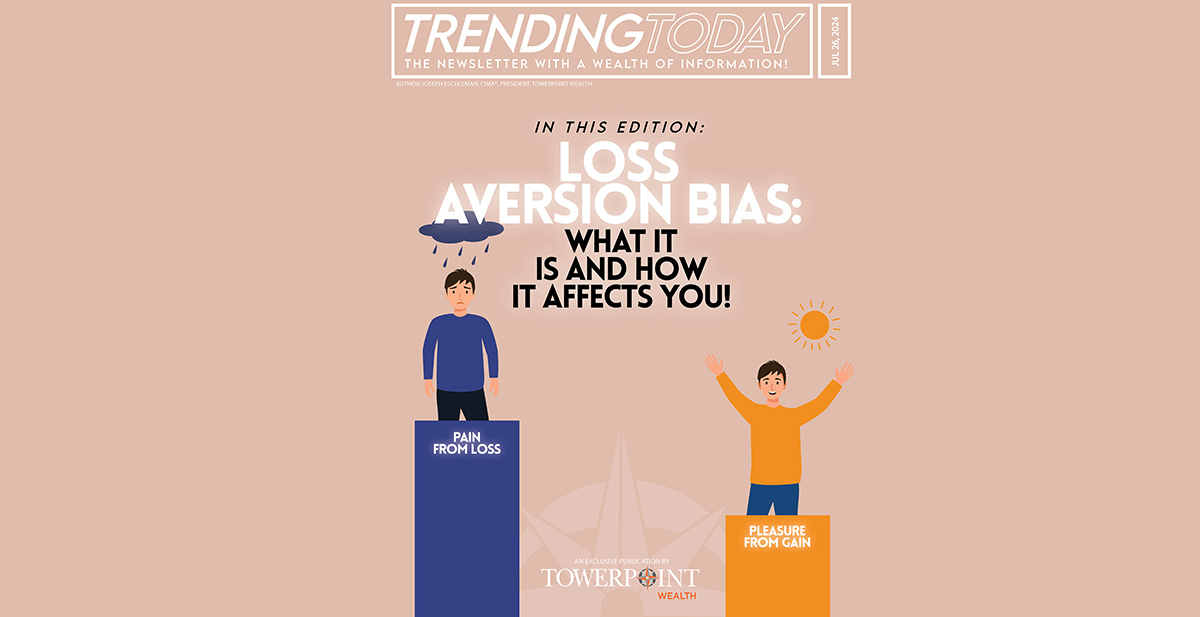All Along the Watchtower
“An Investment in Knowledge Pays the Best Interest” (Ben Franklin)
All Along the Watchtower
There must be some way out of here
Said the joker to the thief
There’s too much confusion
I can’t get no relief
Businessmen, they drink my wine
Plowmen dig my earth
None of them along the line
Know what any of it is worth
No reason to get excited
The thief he kindly spoke
There are many here among us
Who feel that life is but a joke
But you and I, we’ve been through that
And this is not our fate
So let us not talk falsely now
The hour is getting late
All along the watchtower
Princes kept the view
While all the women came and went
Barefoot servants, too
(From “All Along the Watchtower”, by Bob Dylan, made famous by Jimi Hendrix, 1968)
As has been the case so many times over the past ten years, May’s sharp stock market sell-off was followed by an equally sharp “V-Shaped” recovery through most of June, and the markets are now once again at or near all-time highs.
As has also frequently been the case, not much changed in the underlying economy – the market movements were driven almost exclusively by headlines, tweets, and sentiment. Specifically, the market has now priced in an almost 100% certainty that the Fed will cut rates in July, and perhaps once or twice more over the remainder of 2019.
That was followed by some President Trump tweets indicating that he would meet with Chinese Premier Xi Jinping at the late June “G-20” talks in Japan which, in turn, gave the market renewed hope that ongoing trade negotiations might reach a successful conclusion.
And off to the races we went yet again…
It is true that the May sell-off was over-done, and the same probably can be said about the June bounce-back. The simple fact is that what are supposed to be the fundamental drivers of market performance simply have not changed that much over the past two months:
- The global economy remains positive but decelerating, especially outside the US, and especially in global manufacturing;
- Global revenues and earnings remain positive, though also decidedly decelerating;
- Inflation is nowhere to be found, and it is hard to imagine what might spark it upward, other than a protracted Middle East crisis between the US and Iran (which, by the way, is not off the table, though the market does not seem to be pricing in any huge concern that it may turn into an actual “hot” war);
- Global central banks remain uniformly accommodative – there is not a single major central bank that is even considering tightening right now;
- Global interest rates remain pegged to the floor, with no signs of increasing. There currently is in excess of $12 trillion in negative yielding sovereign bonds – investors are paying governments to hold their money! The 10-year US Treasury yield currently is fluctuating just above or below 2.00%, with no signs of rising quickly anytime soon;
- It is true that the 10-year minus 3-month Treasury curve has “inverted” for the past month or so, leading some to make the call that a recession is on the way;
- That said, the 10-year minus 2-year curve (the spread we prefer to follow) remains slightly upward sloping and, even if the curve is calling out an impending recession, historically we’ve had 9-18 months to prepare
Please understand – we will have the next recession at some point, but it does not seem very likely for a while – probably at least not through 2019, barring a turn for the worst in US/China trade talks, escalating tensions in the Middle East with Iran, or both.
All major governments seem dedicated to engaging in whatever fiscal and/or monetary stimulus is necessary to keep the economic growth engine running, albeit with diminishing marginal returns and at the expense of exploding national debts and deficits.
We suspect our children and grandchildren will not think very highly of us when that piper demands to be paid.
With that as a backdrop, looking out over the current economic and investment landscapes, here is what we see.
The Current Economic & Market Landscape
The global economy is still expanding, though slowly:
• Through the end of June, the current estimate of US Q1 GDP growth remains at 3.1%, still positive but a slight decline from the early initial estimate of 3.2%. A fair amount of this expansion was due to inventory growth, which suggests lower growth in the future as the inventories are sold off (source: Bureau of Economic Analysis);
• US Growth is expected to slow to roughly 1.6% – 1.9% over the next 2-3 quarters, and estimates for all of 2019 have fallen to the 1.6% – 2.0% range (source: The Wall Street Journal);
• Ongoing trade negotiations and additional fiscal and/or monetary stimulus could change the economic outlook for the US over the course of the year. Specifically, the markets reacted positively to the news that President Trump and Chinese Premier Xi will “talk” at the G-20 summit in Japan at the end of June. The hope is that progress toward a positive trade outcome is back on the table. Some estimates suggest that a protracted trade war could shave as much as 0.5% off of projected US growth, and it is having an even worse effect on Chinese growth;
• President Trump remains unpredictable in his trade announcements, but there does seem to be progress in the negotiations between the US and its primary trading partners (specifically, China, Canada, Mexico, and Europe). The market certainly is pricing in assumptions about deals being agreed to over the course of 2019;
• Given the rhetoric and partisanship in Washington, DC, we do not anticipate any agreement for additional fiscal stimulus prior to the 2020 elections;
• That said, the market is pricing in a locked-down assumption that there will be additional monetary stimulus in the form of Fed rate cuts. As we reach the end of June, the market (as measured by Fed Funds Futures) is pricing in an almost 100% certainty that the Fed will cut rates by at least 25 basis points when it next meets in July (after announcing no rate cut at its June meeting), and the assumption is that there will be at least one and possibly two rate cuts by the end of the year;
• The market has reacted very positively to this assumption of a rate cut, but we have a bit of difficulty understanding what the excitement is about. Interest rates already are as low as they have been in years – what difference will a 25 (or even 50) bp cut in rates make? It seems the market simply is rewarding the Fed for not raising rates, versus pricing in the actual market impact of a cut;
• Frankly, we see the risk profile of the market as being very asymmetrical right now – in the wrong direction. What we mean is that the market seems to have fully priced in a lot of positive assumptions about trade and interest rates. If something else happens (as is always a possibility), we fear the market may react quite negatively;
• Both the US manufacturing (52.1) and services (56.9) sectors remained in expansionary mode in May (any reading above 50 is considered expansionary). The PMI (manufacturing) index continued its fairly steady month-over-month decline, but the NMI (services) index reversed course and ticked up for the month (source: The Institute for Supply Management);
• The IHS Markit estimates for June suggest declines in the PMI (down to 50.1) and the NMI (down to 50.9) (source: IHS Markit);
• As the summer continues, increased attention will be paid to ongoing federal budget negotiations, including a required raising of the debt ceiling sometime in September or October. The federal debt and deficit are exploding and neither political party is the least bit interested in addressing the issue. There is no spending discipline in Washington, DC right now;
• Inflation remains muted (US CPI was just 1.8% year-over-year in May), and remains below the target rate of 2% set by the Fed. In a world where there is more than $12 trillion in negative yielding sovereign bonds, there seems to be an insatiable demand for US Treasury paper, even at rates as low as they have been in several years (source TradingEconomics);
• The employment picture in the US remains robust, though wages ticked down in May (up 3.11%year-over-year, down slightly from their recent high of 3.4% in February). Automation and globalization remain firm dampeners on wage growth, despite the low levels of unemployment –3.6% in May (source: The St. Louis Federal Reserve Bank);
• With the Q2 earnings season set to begin in another week or two, current expectations are for decided deceleration. S&P 500 earnings for Q2 are expected to fall 3.1% year-over-year, on an estimated 4.3% increase in revenues. For the full year of 2019, current estimates are for earnings to increase 1.1% on revenue increases of 2.5% — still positive growth but a dramatic decrease in comparison to 2018; (source: Zachs Earnings Outlook, June 19, 2019);
• The primary threats to continued economic expansion remain tenuous trade and tariff negotiations, ongoing political “re-adjustments” in Europe, especially in the UK, and escalating geo-political tensions between the US and Iran;
• With low inflation, signs of a decelerating economy, and huge investor demand for US Treasuries, there is little upward pressure on interest rates;
• The yield curve remains very flat, and the long end remains “tamped down” by high demand for US Treasuries and a lack of inflation fears;
• As we approach the end of June, there is only ~30 basis points difference between the yield on the 2-year and 10-year Treasury – the yield curve fell considerably over the course of the month, and the 10-year Treasury rate currently is fluctuating just above or below the psychological boundary of 2.00% (source: YCharts);
• Although the yield curve has not inverted as measured by the 10-year / 2-year spread (our preferred measure), it has inverted (and remained so for more than a month) if measured by the
10- year / 3-month spread. Some analysts believe this to be a harbinger of an impending recession. We continue to think this is a bit over-stated and are not overly concerned that (a) the curve will invert for any extended period of time or (b) should it invert it does not necessarily mean we are headed into a recession any time soon (i.e., any time this year);
• Given the strongly held assumption that the Fed will cut rates in July, the US dollar weakened against both the euro and the yen over the past month, despite dovish sentiments expressed by Mario Draghi at the European Central Bank (ECB);
• President Trump has been explicit that he desires a weaker dollar and lower interest rates, and has threatened Fed Chairman Jerome Powell with demotion or firing if he doesn’t deliver. We continue to believe this is inappropriate behavior, and that it is important for the Fed to remain an independent agency acting on behalf of smoothly functioning capital markets, not the political desires of any given President. No central bank is omniscient, and they have made and will continue to make mistakes, but they should remain independent;
• The Euro area reported a Q1 GDP growth rate of 1.2%, the same as the previous quarter and in line with expectations. While not in a recession, European economic growth has fallen fairly steadily since the 3rd quarter of 2017 (source: TradingEconomics);
• Manufacturing all across the Euro area continues to slip and remains in non-expansionary territory – 47.8 in June, the fifth straight monthly decline and the lowest reading since April 2013 (source: IHS Markit and TradingEconomics);
• On the other hand, the Euro area Services index remains expansionary (53.4 in June, up from 52.5 in May) (source: TradingEconomics);
• Euro area unemployment fell slightly in May to 7.6%, and remains at its lowest level since 2008 (source: TradingEconomics);
• Inflation is a non-issue in Europe (1.2% year-over-year in May, down from 1.7% in April, and at its lowest level since April 2018), and the ECB has turned decidedly dovish again. Deflation represents the bigger risk at this point (source: TradingEconomics);
• Japan’s GDP is back in positive territory (1.8% in Q4 2018 and 2.2% in Q1 2019), but remains sluggish and sensitive to changes in exchange rates. A weakening dollar (should it continue) will hurt Japanese exports, a critical factor in its economic activity (source: TradingEconomics);
• China’s (official) GDP growth in Q1 2019 was 6.4% (annualized), the same as Q4 2018, and represented the lowest reported growth rate since the Financial Crisis in 2008. Fairly massive fiscal and monetary stimulus has had some positive effect, but the Chinese economy has been hit much harder than the US economy during the on-again / off-again trade negotiations. The simple fact is that China needs the US more than the US needs China (though both sides lose in an extended or escalated trade war) (source: TradingEconomics);
• The Chinese manufacturing index remained barely expansionary in May, at 50.2 (source: TradingEconomics).
The Towerpoint Wealth Economic & Market Outlook:
• The global economy remains non-recessionary, though there is a decided deceleration of growth, and ongoing trade tensions are beginning to have a tangible negative effect;
• US economic growth, interest rates, inflation, and earnings all remain at least slightly expansionary. Wages and input prices are slowly increasing, but we do not see them as threats (yet) to continued expansion;
• Globally, inflation simply is not a problem, due to slow growth and relatively stable input prices. Oil prices rose steadily through mid-May, fell during the market panic toward the end of the month, but generally have stabilized since then;
• Global central bank policies remain “synchronized” around an easing theme, and this should be beneficial for risk assets;
• Market volatility spiked in May as investors showed increased nervousness over trade tensions, Brexit, and the perception of slowing economic growth. The bounce-back through most of June once again brought volatility back down to repressed levels – investors so strongly believe that trade tensions will ease and central banks will remain accommodative that they have slipped back into complacency;
• The June rally raised US valuations back to historically high levels – once again, nothing looks cheap to us;
• For longer-term investors we still like EM valuations relative to US or EAFE (developed international) valuations. Should the dollar continue to weaken, that will be beneficial for non-US market returns for US investors;
• The US yield curve remains incredibly flat (there currently is a ~30 bps difference between the 2-year and 10-year yields), as lower longer-term expected growth rates and investment flows combine with only modest inflation expectations to “tamp down” the long-end of the curve
(source: YCharts);
• As of the end of June, the 10-year Treasury rate was trading just above or below 2.00% – its lowest level since Q3 of 2017 (source: YCharts);
• The yield curve has actually inverted if measured by the spread between 3-month rates and 10-year rates. As of the end of June, there was a negative spread of roughly 11 basis points, and that spread has been negative for most of the past month – its longest “inversion” in years
(source: YCharts);
• The public credit markets continue to look expensive to us, although investors seem to be fairly compensated for default risk, as corporate balance sheets generally are in pretty good shape;
• Both investment grade and high yield credit spreads widened over the course of May, especially high yield spreads, but those spreads drifted generally lower over the course of June, and remain incredibly tight by historical standards (source: YCharts);
• We remain concerned about high yield liquidity and refinancing risk and the growing level of “covenant lite” bank loans. Additionally, more than 40% of non-financial investment grade debt is rated BBB – the lowest investment grade level. If and when we head into the next recession, there could be a liquidity crisis if more than a modest amount of this debt falls into non-investment grade territory (source: FocusEconomics);
• For investors who can access the private markets and handle some degree of illiquidity, we still believe there are better opportunities in the private versus public markets, though investors face increasingly compressed premiums versus historical levels, driven by huge investment flows over the past 24-30 months;
• Hedge funds generally are performing as expected, and given valuation levels for the traditional public equity and credit markets, there is growing investor interest in considering lower-correlated investment strategies;
• Liquid alternatives (alternative investment strategies that trade in mutual fund form) continue to struggle, though they “did their job” in May and June with respect to mitigating market volatility and downside market movement;
• Real assets generally have been stable to slightly rising. Oil prices may be affected by ongoing geo-political tensions between the US and Iran, but that is not yet in evidence as we reach the end of June;
• When we consider the fundamental drivers of market performance – economic growth, earnings, interest rates, inflation, and central bank policy – we remain generally constructive, but we have entered a new phase of the market cycle, and we expect increased volatility and periodic bouts of investor panic as we move through the year, especially once the “summer doldrums” are over;
• With that in mind, we believe a heightened focus on quality, liquidity, and diversification is an appropriate course of action.
As we review the general state of the global economy and investment markets, the word that keeps running through our mind is “asymmetrical”. We believe that the underlying fundamentals remain generally positive, but the market increasingly is “priced for perfection” and subject to downside shocks if what’s being priced in turns out differently than expected.
As Sergeant Phil Esterhaus used to say on the iconic 1980s TV cop show Hill Street Blues, “Let’s be careful out there”…
Joseph F. Eschleman, CIMA® President
Towerpoint Wealth, LLC







